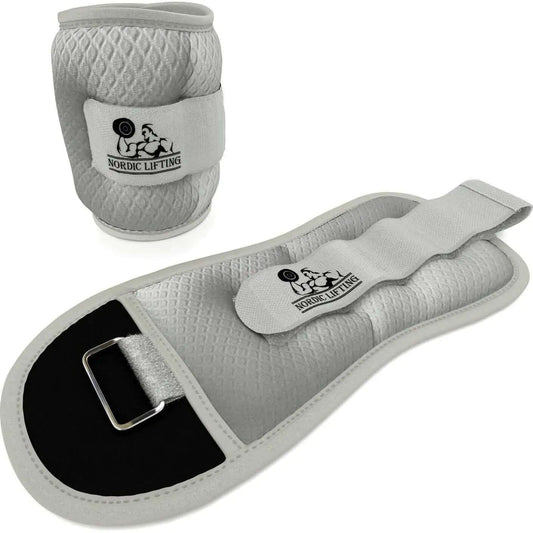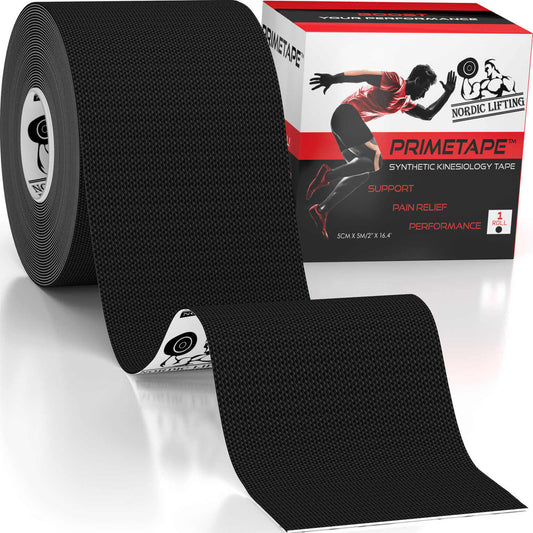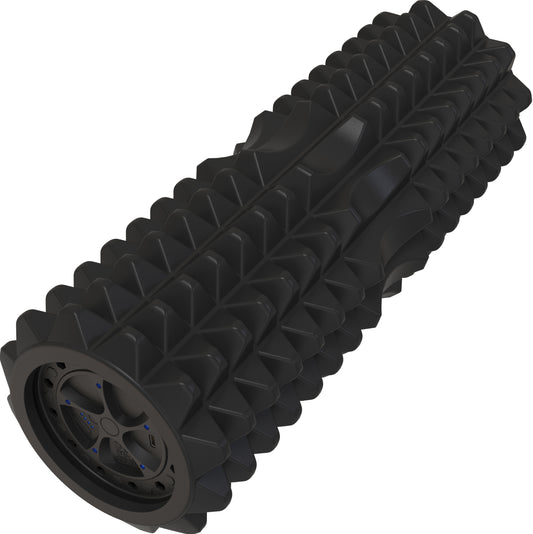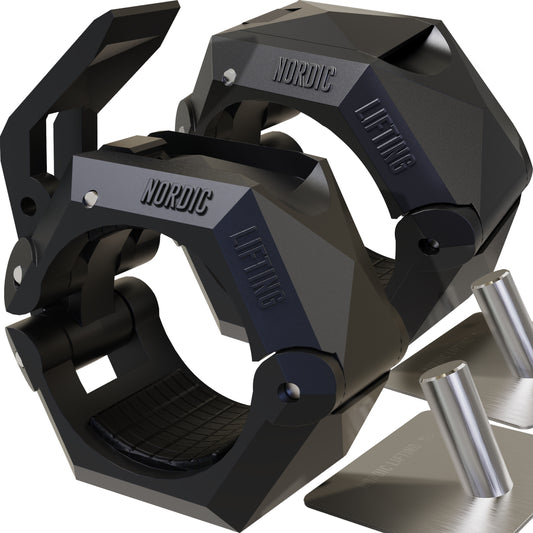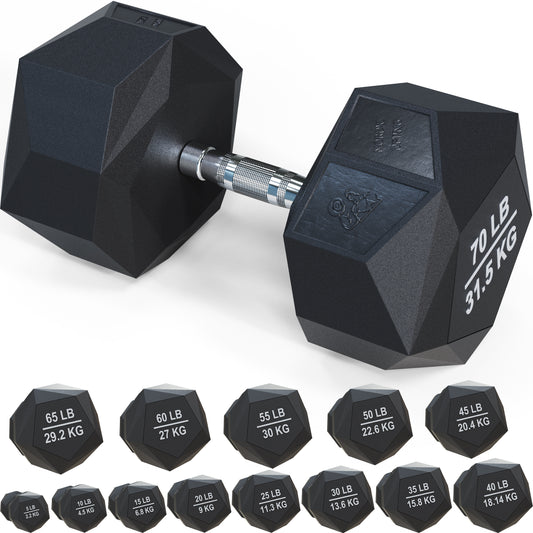Last Updated: April 8, 2025
For anyone serious about lifting, having a solid fitness strategy is crucial to achieving lasting results. A tailored approach that combines proper technique, nutrition, and mindset can significantly enhance performance and prevent injuries. Whether a beginner or an experienced lifter, understanding the core strategies can lead to better gains and a more fulfilling fitness journey.
Developing a lifter's mindset is just as important as physical training. By focusing on both mental and physical aspects, individuals can gain the confidence needed to push their limits. Incorporating essential strength training exercises and effective nutrition can have a remarkable impact on recovery and growth.
In the competitive world of fitness, it is vital to consistently evaluate progress and adjust training methods. With the right strategies, lifters can remain motivated and engaged, making their fitness journey more enjoyable and effective.
Key Takeaways
- A balanced approach to lifting includes technique, nutrition, and mindset.
- Regularly adjusting training strategies can maximize results.
- Mental preparation plays a key role in achieving fitness goals.
Understanding Fitness Fundamentals
Fitness fundamentals provide the foundation for anyone looking to improve their strength and overall health. Key elements include the science behind strength training, the principles of muscle growth, and the importance of using proper technique.
The Science Behind Strength Training
Strength training focuses on exercising muscles against resistance. This resistance can come from weights, bodyweight, or resistance bands.
When muscles are stressed through exercise, tiny tears occur. The body repairs these tears, leading to stronger and larger muscles. This process is known as muscle hypertrophy.
The human body responds to strength training by increasing muscle fibers. This adaptation improves not just muscle size but also endurance and strength. Understanding this science helps lifters recognize the value of consistent workouts.
Principles of Muscle Growth and Progressive Overload
Muscle growth heavily relies on the principle of progressive overload. This means gradually increasing the demands placed on the body during exercise.
To achieve muscle growth, lifters should consistently challenge themselves. They can increase weight, change the number of repetitions, or adjust the intensity. Here are common methods to apply progressive overload:
- Increase Weight: Lift heavier weights over time.
- More Reps: Perform more repetitions with the same weight.
- Change Tempo: Slow down lifting or lowering phases.
By applying these methods, a lifter can encourage their muscles to adapt and grow.
Importance of Proper Technique
Proper technique is crucial for safe and effective workouts. Using the right form helps prevent injuries and maximizes effectiveness.
Lifters should focus on alignment, grip, and movement patterns specific to each exercise. For example, while performing squats, keeping the back straight and knees aligned with the toes is essential.
Learning and practicing proper form allows individuals to lift heavier weights and achieve better results. Injuries often result from improper technique, so it should never be overlooked.
Incorporating these fundamentals into a fitness routine can lead to lasting gains in strength and health.
Developing a Lifter's Mindset
A lifter's mindset is essential for success in weightlifting. It involves both setting realistic goals and building mental toughness. These elements help lifters stay focused and motivated through challenges.
Setting Realistic Fitness Goals
Setting smart fitness goals is crucial for progress. Lifters should aim for Specific, Measurable, Achievable, Relevant, and Time-bound (SMART) goals.
-
Specific: Identify exactly what to achieve. For example, instead of "lift more," specify "increase squat by 20 pounds in three months."
-
Measurable: Track progress through numbers. This can include weights lifted or personal records.
-
Achievable: Goals should be challenging yet reachable. Avoid setting impossible targets that can cause frustration.
-
Relevant: Ensure the goals align with personal fitness aspirations. This keeps the lifter engaged.
-
Time-bound: Set a deadline. Time frames create urgency and motivate consistent effort.
Lifters should regularly reassess their goals to reflect their growth and changing abilities.
Mental Toughness in Weightlifting
Mental toughness plays a vital role in overcoming obstacles. It involves focus, discipline, and resilience.
-
Focus: Lifters need to tune out distractions and concentrate on their performance. This can be trained through routine practices in the gym.
-
Discipline: Consistency in training and diet requires strong willpower. Lifters should prepare for tough days and push through.
-
Resilience: Setbacks are part of the journey. Developing resilience helps lifters bounce back from failures. They should view challenges as learning opportunities.
Practicing visualization techniques can enhance mental toughness. Picture achieving goals or overcoming difficulties. Regularly building this mindset can lead to improved performance and greater success in lifting.
Essential Strength Training Exercises
Strength training exercises are vital for building muscle, improving overall fitness, and enhancing athletic performance. Focusing on key movements helps lifters develop strength effectively. Below are three essential exercises that form the backbone of many strength training programs.
Mastering Squats for Lower Body Strength
Squats are a powerful exercise for developing lower body strength. They primarily target the quadriceps, hamstrings, and glutes. To perform a squat correctly, one must keep the chest up, engage the core, and lower the body by bending at the knees and hips.
- Foot Placement: Feet should be shoulder-width apart.
- Depth: Aim to lower until thighs are parallel to the ground.
- Breathing: Inhale on the way down, exhale while pushing up.
Proper form is crucial to avoid injuries. Beginners should start with bodyweight squats before progressing to weights. Using squat variations, such as goblet squats or barbell squats, can also enhance strength and stability.
Perfecting Pullups to Target the Lats
Pullups are an excellent exercise for targeting the latissimus dorsi, the large muscles in the back. They also work the arms and shoulders. To perform a pullup, one should:
- Grip: Use an overhand grip on the bar, hands shoulder-width apart.
- Body Position: Hang fully extended with arms straight.
- Movement: Pull the body upward until the chin is above the bar.
Keeping the core tight will help maintain body control during the lift. For beginners, assisted pullup machines or bands can provide the support needed to build strength. Regular practice will enhance upper body strength and improve overall performance in athletic activities.
The Role of Deadlifts in Building a Strong Back
Deadlifts are a foundational exercise that works the entire posterior chain, including the back, glutes, and hamstrings. This compound movement is essential for developing lower back strength. To execute a deadlift effectively, lifters should:
- Stand Tall: Feet hip-width apart with the barbell over the midfoot.
- Grip the Bar: Use an overhand grip, engaging the core.
- Lift: Push through the heels while keeping the back straight and chest up.
Proper technique is crucial to prevent injuries. Lifters can start with lighter weights to master the form. Variations like sumo deadlifts or Romanian deadlifts can provide different benefits and targets, ensuring a well-rounded strength training routine.
Training Strategies for Optimal Growth
Effective training strategies are essential for anyone looking to maximize their gains in the gym. By focusing on manipulating key training variables, ensuring proper rest and recovery, and balancing intensity with volume, lifters can enhance their performance and achieve optimal growth.
Manipulating Training Variables
Adjusting training variables is crucial for promoting muscle growth. This includes altering weight, repetitions, sets, and rest periods. One effective method is progressive overload, which means gradually increasing the weight lifted over time. For example, if a lifter can comfortably perform 10 reps at a certain weight, they should aim to increase the weight to challenge their muscles further.
Lifters should also vary repetitions and sets. A common approach is to alternate between high-rep days for endurance and low-rep days for strength. Additionally, limiting rest periods to around 30-90 seconds can increase muscle fatigue and promote growth.
Incorporating Rest and Recovery
Recovery is just as important as training itself. Muscles need time to repair after workouts. Adequate rest helps prevent injury and improves overall performance. Lifters should aim for at least 48 hours of recovery for the same muscle group before training it again.
This includes both sleep and active recovery strategies. For instance, incorporating low-intensity activities like walking or yoga can help maintain blood flow to sore muscles. Nutrition plays a role too; consuming protein-rich foods post-workout supports muscle repair.
Balancing Intensity and Volume
Finding the right balance between intensity and volume is key to growth. Intensity refers to how heavy the weights are, while volume is the total amount of work done (sets x reps).
A popular strategy is the 80/20 rule, where 80% of a workout focuses on moderate intensity and volume, while 20% hits high intensity. This approach allows for muscle growth without overtraining. Lifters should monitor their fatigue levels and adjust their training load accordingly. Training too hard without proper adjustments can lead to burnout or injuries.
Nutrition for Strength and Recovery
Proper nutrition is crucial for strength athletes. It aids in muscle repair, provides energy for lifting, and enhances recovery after intense workouts. Focusing on specific nutrients can lead to better performance and quicker recovery.
Protein Intake and Muscle Repair
Protein plays a vital role in muscle repair. After lifting weights, muscles experience tiny tears. Consuming protein helps to rebuild these muscles, making them stronger.
- Recommended protein sources include:
- Chicken breast
- Fish
- Eggs
- Greek yogurt
- Plant-based options like lentils and beans
The general guideline is to aim for 1.2 to 2.2 grams of protein per kilogram of body weight daily, depending on the intensity of training. Timing matters too; having protein within 30 minutes post-workout can maximize recovery.
Energy Needs for Heavy Lifting
Lifters require sufficient energy to perform at their best. Energy needs vary based on the intensity and duration of workouts. This energy primarily comes from carbohydrates and fats.
- Key carbohydrate sources include:
- Whole grains
- Fruits
- Vegetables
- Sweet potatoes
The recommended carbohydrate intake can range from 3 to 10 grams per kilogram of body weight, tailored to exercise levels. This ensures the body has adequate fuel for performance and recovery.
Supplements and Their Role in Fitness
Supplements can support a lifter's diet but should not replace whole foods. Common supplements include protein powders, creatine, and branched-chain amino acids (BCAAs).
- Protein powders help meet daily protein needs when it's hard to get enough from meals.
- Creatine can enhance strength and improve performance during high-intensity training.
- BCAAs may help reduce muscle soreness and support recovery.
Always consult with a healthcare provider before starting any new supplements to ensure safety and effectiveness.
Injury Prevention and Management
Injury prevention is critical for lifters to maintain progress and avoid setbacks. Proper routines and awareness of body signals can significantly reduce the risk of injury during resistance training.
Warm-Up and Cool-Down Routines
Effective warm-up and cool-down routines are essential for lifters. A proper warm-up increases blood flow to muscles, improving flexibility and reducing injury risk. It can include dynamic stretches such as arm circles and leg swings.
A sample warm-up might involve:
- 5-10 minutes of light cardio (jogging or cycling)
- Dynamic stretching (lunges with a twist)
- Specific movement preparation (low-weight squats)
After workouts, cooling down allows the body to return to a resting state. It helps prevent soreness and stiffness. Cool down with:
- 5-10 minutes of light activity (walking)
- Static stretching (holding stretches for 15-30 seconds)
Incorporating both routines can enhance mobility and bone density, supporting long-term health.
Recognizing and Reacting to Training-Related Pain
Lifters must learn to recognize training-related pain. Pain can signal the need to adjust form, reduce intensity, or rest. It's crucial to differentiate between normal discomfort and pain that may indicate injury.
Signs of potential injury include:
- Persistent pain during activities
- Swelling or bruising
- Reduced range of motion
If pain is experienced, lifters should take immediate action. This could involve resting the affected area and applying ice to reduce inflammation. Consulting a medical professional for severe pain is advisable.
Listening to the body can prevent minor issues from escalating into serious injuries. With proper management and awareness, lifters can continue their training safely and effectively.
Advanced Lifting Techniques
Advanced lifting techniques enhance strength and improve performance for experienced lifters. These methods include Olympic weightlifting movements and powerlifting strategies, both designed to maximize gains and refine skill.
Olympic Weightlifting Movements
Olympic weightlifting focuses on two main lifts: the clean and jerk, and the snatch. These lifts require explosive strength and precise technique.
Key Components:
- Clean and Jerk: This movement involves lifting the barbell from the ground to the shoulders and then overhead. It demands strength, coordination, and mobility.
- Snatch: The barbell is lifted from the ground to overhead in one fluid motion. It requires speed and skill, promoting full-body strength.
Athletes should prioritize proper form to prevent injury and maximize effectiveness. Training cycles should include practicing these movements regularly, focusing on technique, and incorporating accessory exercises like front squats and overhead presses to build supporting strength.
Powerlifting Strategies for Maximal Strength
Powerlifting centers on three core lifts: the squat, bench press, and deadlift. Techniques within powerlifting maximize strength gains.
Important Strategies:
- Progressive Overload: Gradually increase weights to challenge the body and stimulate muscle growth.
- Technique Optimization: Proper form is crucial. Lifters should practice each lift with focus on body alignment and mechanics.
Additionally, lifters often use variations like paused squats or bench presses to strengthen weaknesses in their lifts. Accessory movements, such as rows or lunges, also support overall strength development.
Incorporating these techniques into a training program will help advanced lifters achieve new levels of strength and performance.
Evaluating Progress and Adjusting Training
Evaluating progress is essential for any lifter looking to improve. Tracking gains helps identify what works and when to make necessary changes. Adjusting training can optimize performance and prevent plateaus.
Tracking Strength Gains
To effectively track strength gains, it is crucial to maintain a detailed log. Lifters should record each exercise, noting the sets, reps, and weights used. This practice allows for clear visibility of progress over time.
A simple table can help organize this data:
| Date | Exercise | Sets | Reps | Weight |
|---|---|---|---|---|
| Apr 1, 2025 | Squat | 3 | 8 | 150 lb |
| Apr 5, 2025 | Squat | 3 | 8 | 155 lb |
Incorporating progressive overload is vital. This technique involves gradually increasing the weights or reps to consistently challenge the muscles.
Tracking personal bests and monitoring body measurements can also provide insight into strength gains, making it easier to visualize progress.
When to Modify Your Workout Program
Lifters should consider modifying their workout program if they encounter a plateau. Signs of stagnation include a lack of strength gains or decreased motivation.
It is advised to reevaluate training every 4-6 weeks. This timeframe allows adequate assessment without uncertainty.
Options for modification include changing exercise selection, adjusting volume, or altering rest periods. For instance, trying different grips or angles can stimulate growth in underused muscle groups.
Listening to the body is equally important. If fatigue or soreness persists, this might indicate the need for a deload week or easier sessions. By proactively adjusting the program, lifters can continue making progress and avoid burnout.
Frequently Asked Questions
This section addresses common questions that lifters have about their training. It covers effective exercises, techniques for proper form, and tailored advice for different groups, such as beginners and females.
What are the most effective weight lifting exercises for beginners?
Beginners should start with fundamental exercises that build strength and technique. Squats, deadlifts, bench presses, and overhead presses are excellent choices. These exercises target major muscle groups and help in developing a balanced physique.
How can females optimize their weight lifting routine for maximum benefit?
Females can benefit from incorporating compound movements like squats, bench presses, and rows into their routines. Balancing cardio with strength training is important. Additionally, focusing on progressive overload and adequate rest can enhance results and promote muscle growth.
What techniques ensure proper form when lifting dumbbells?
To maintain proper form, beginners should keep their back straight and engage their core. It is essential to control the weights throughout the lift and avoid swinging or using momentum. Practicing in front of a mirror can help ensure that the form is correct.
Can you explain the 2 2 2 rule in weightlifting and its advantages?
The 2 2 2 rule suggests that if a lifter can complete two additional repetitions in the last set for two consecutive workouts, they should increase the weight by about 2.5 to 5 pounds. This method encourages consistent progress and helps to prevent plateaus in strength training.
How should beginners approach weight lifting to build muscle effectively?
Beginners should start with lighter weights to perfect their form. Following a structured program that includes different muscle groups throughout the week is beneficial. Consistency and gradually increasing the weights over time will help in building muscle effectively.
What essential tips should male lifters follow when starting a fitness routine?
Male lifters should ensure they have a balanced routine that includes strength training and cardio. Focusing on form and not ego lifting is crucial to prevent injuries. Adequate nutrition and hydration play significant roles in recovery and overall progress.







